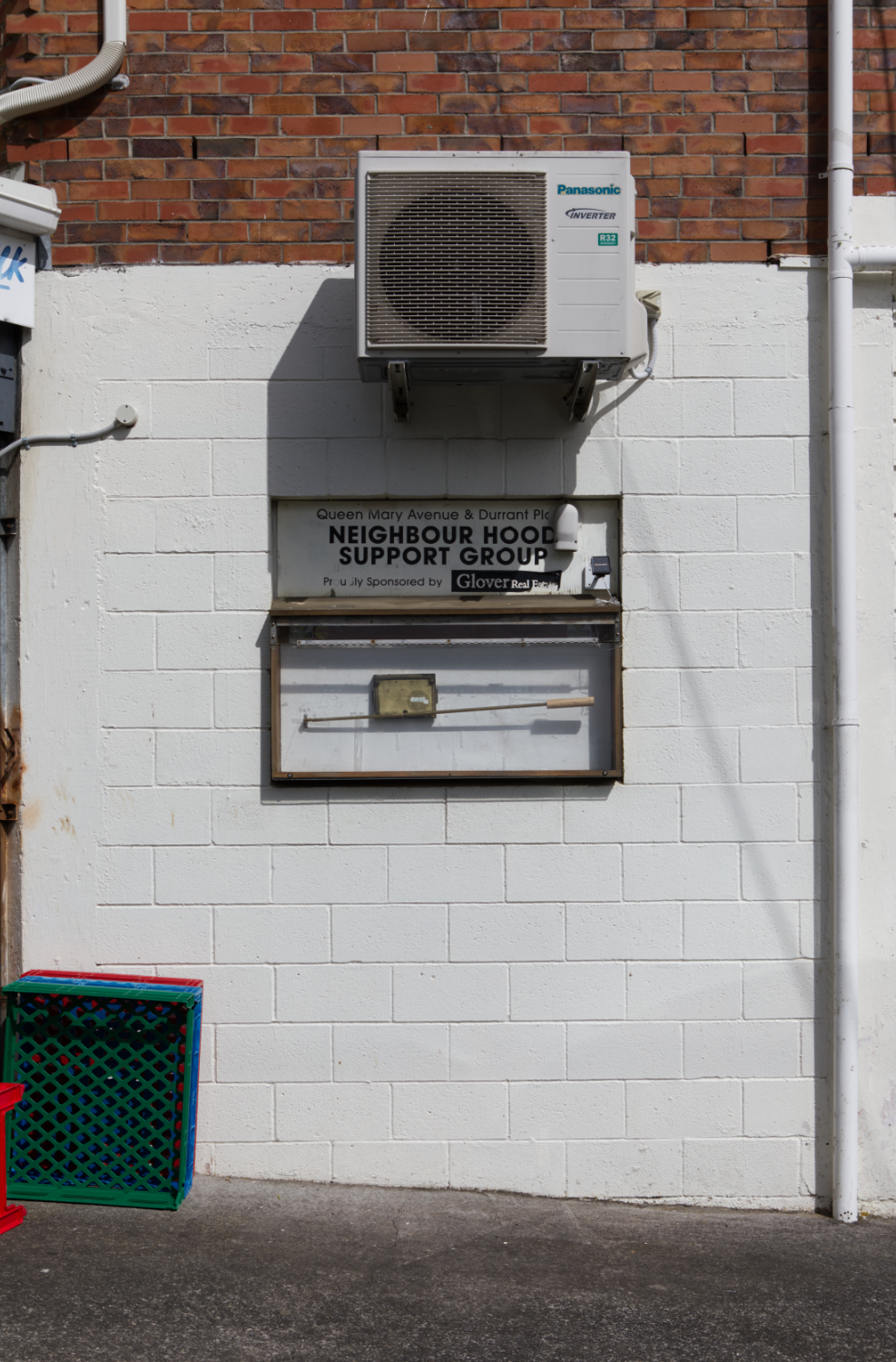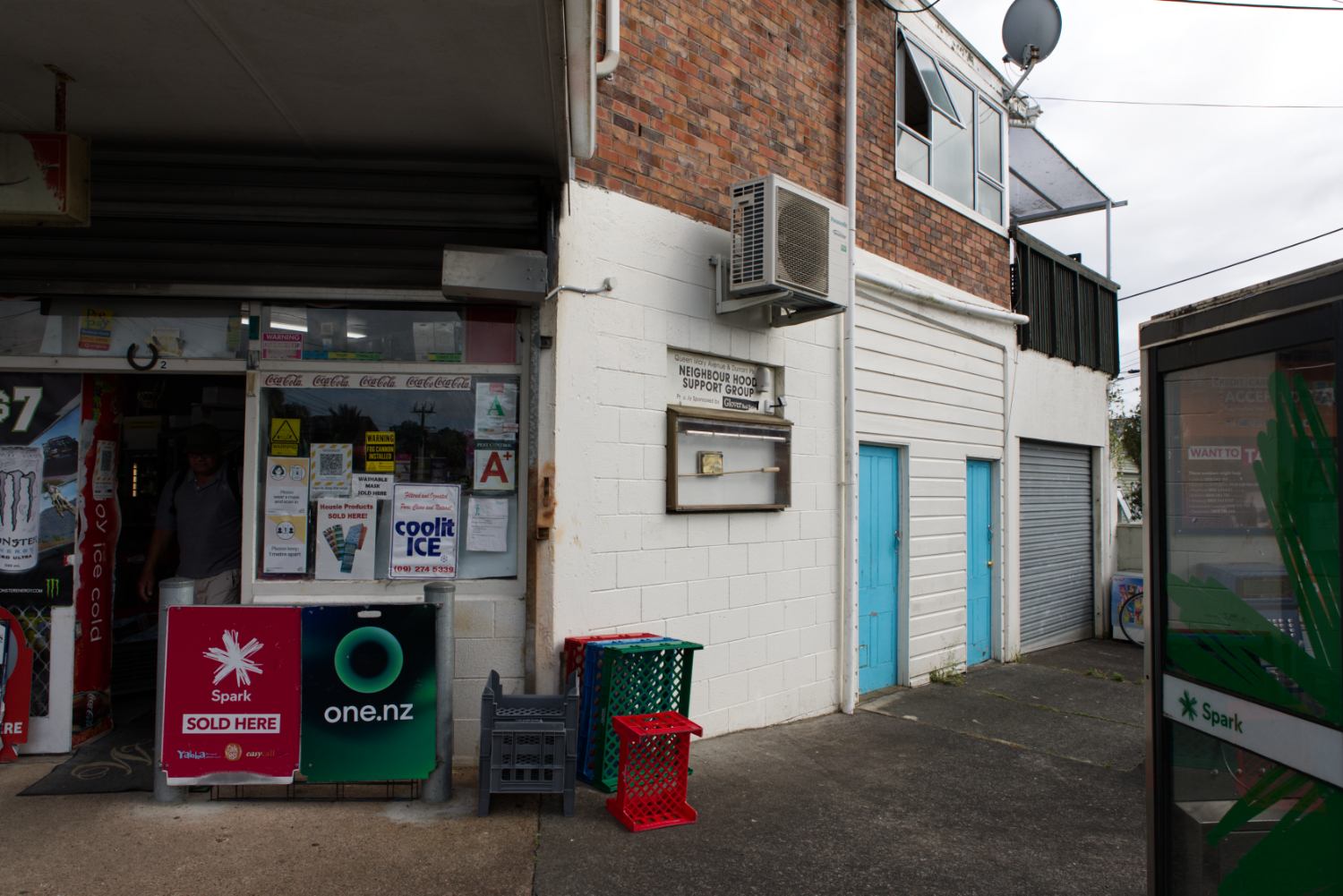Exhibition Three, Season Two: 20 January – 16 February 2024
Artist: J.A. Kennedy
The Earth
2 Queen Mary Avenue
Whau New Lynn, 0600
Tāmaki Makaurau Auckland
Aotearoa New Zealand
36.9027° S, 174.6760° E
2024
Bronze, stainless steel, Cupressus macrocarpa, Pinus radiata.

One of them must play the role of the reality that denounces the other’s mirage.*
While navigating the mirage of day to day life in the vicinity of the estuarial arm of the Whau, this installation is an attempt at performance without the presence of a body.
Without a body, how is a performance acted out and made perceivable? A bronze mailbox stands in as the embodiment of potential correspondence. Here the box is held shut, diction obfuscated by a sceptre of segmented bronze and macrocarpa. A tiller extension whose faux control stifles connection. A twist of the wrist and the tiller breaks. Silence is redirected, and ignorance makes way for familiarity. The world comes rushing in. What is held within the mind will readily enter and exit. To accommodate future listening a tide of voices are to be heard, from over water, through fields, roads, and under fences.
Within the liminal zone of definition, does pinpointing the description of place, with its veiled occurrences, become impossible to untangle from phenomenal perspective?
Down the road and around the bend from 2 Queen Mary Avenue, the whau (Entelea arborescens) is aided in its growth by recultivation efforts. Spiky bundles of seed protrude from under leaves whose familiar shape redirects attention to the sea hibiscus (Hibiscus tiliaceus), the namesake of the whau.** It is here we witness botanical nomenclature positioned as orientation to a distant past, received after traversing spatial and temporal distance.
* Rancière, J. 2009, The Emancipated Spectator (trans: Gregory Elliott) Verso, New York, 85
** https://www.temarareo.org/TMR-Whau.html (Accessed 13-1-24)
J.A. Kennedy’s multidisciplinary practice can be described as an attempt to engage with components implicated in the poetics of intricate ecologies, recognizing the interconnectedness between human and non-human entities. Kennedy employs a methodology of play and transposition, utilising performance to camera, still/moving image, drawing, sculpture, publication, and installation as vehicles to investigate trajectories within a site of inquiry.



